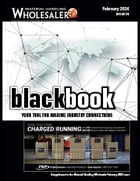 Michael Hampleman
Michael Hampleman Topics to consider regarding second draw of PPP Funding
Business owners, CPAs, loan officers, and if applicable, business brokers, should use a variety of tactics simultaneously as businesses pursue economic support in the form of the second draw of PPP funding. Per advice from the AICPA, the American Institute of Certified Public Accountants, borrowers may need to act quickly and diligently to fill out their forms for the second round of PPP funding.
Some lenders are requiring PPP borrowers to apply for forgiveness on their first-draw PPP loan before they file to seek a second-draw PPP loan. However, according to the SBA and Treasury, this is not a requirement. Possible borrowers may want to consider other lenders to process the second-draw loan application without the business having to file for forgiveness on their first PPP loan.
Compiling the relevant data that lenders seek is a critical step. Information such as average monthly payroll amounts and (for second-draw PPP borrowers) quarterly revenue comparisons are necessary. Supporting documentation for the average monthly payroll calculation used to calculate the maximum loan amount can be obtained from clients to support those amounts they come up with and will be helpful in the future, as it drove the amount of the PPP funds the borrower received.
Borrowers also need to be aware of updates on PPP forgiveness and differences between first-draw and second-draw loans. Potential borrowers should understand that second-draw applications require borrowers to prove they have experienced at least a 25% reduction in gross receipts as a result of the pandemic by comparing one quarter of 2020 to the same quarter in 2019. The new guidance makes certain covered operations expenditures, covered property damage costs, covered supplier costs, and covered worker protection expenditures eligible for PPP forgiveness.
As of January 20, 2021, the SBA and Treasury released an updated and simplified version of the PPP Forgiveness application. The form is called PPP Loan Forgiveness Application Form 3508S. It can be used by borrowers that received a PPP loan of $150,000 or less. Borrowers are not required to submit any supporting documentation with the application but are mandated to maintain payroll, nonpayroll, and other documents that could be requested during an SBA loan review or audit. The groups also released a Form 3508 for entities that received PPP funds in excess of $150,000.
The second-round of PPP funding also opens the possibility of PPP funding for entities that were not eligible for the first-round such as certain 501(c)(6) not-for-profits. These entities include chambers of commerce, destination marketing organizations, certain housing cooperatives, and some local media stations. If a borrower falls into this category, they should take notice of specific lender restrictions regarding funding as lender requirements for these entities tend to vary by lender.
The rules seem to be constantly changing with regards to PPP loans, as evidenced by the weekly release of procedure notices, interim final rules, and other forms of guidance from either the IRS, SBA, or the Treasury. For example, recently released guidance explains how both first-draw and second-draw loan calculations should be evaluated by lenders. The new guidelines also discussed what happens in the event that a borrower receives a larger PPP loan than originally eligible for. If an application error caused a PPP borrower to receive a larger PPP loan than it was eligible for, the SBA and Treasury have determined that the borrower may not receive loan forgiveness for any amount exceeding the allowed maximum, regardless of whether the borrower or the lender is responsible for the error. The borrower will be required to begin making payments on the remaining loan amount that is in excess of the amount forgiven. The new guidance also discusses what happens if a borrower wants to resubmit their loan forgiveness application using the updated Form 3508S but originally applied using a different form. The borrower may resubmit the loan forgiveness application to its lender at any time until the SBA notifies the lender of a final SBA loan review or remits the lender the PPP loan forgiveness payment. If a lender receives a timely borrower resubmission of a loan forgiveness application using SBA Form 3508S, the lender should promptly request the withdrawal of any lender loan forgiveness decision by notifying the SBA through the SBA Paycheck Protection Platform. Resubmissions are not allowed after the SBA notifies the lender of a final SBA loan review decision or remits the PPP loan forgiveness payment to the lender.
Next, professionals and business owners should always be aware of possible changes that can be made to the PPP application/forgiveness process. For example, earlier in 2020, the IRS released guidance stating that PPP recipients would be unable to look at the changes to claim tax deductions on expenses that were paid for using PPP loans. While the AICPA respectfully disagreed, the IRS refused to change its position on the ruling. It was not until the Consolidated Appropriations Act, 2021 passed in late December, that Congress passed legislation opposing the position of the IRS. Applicable expenses paid using PPP funds are also deductible on the tax return of the business.
There is no denying that certain industries have been hit harder than others by the COVID pandemic and regulations. If a business is eligible under the 25% gross revenue test, there should be no issues obtaining the second draw of PPP funding. If you own a small business and have any questions regarding applying for the second round of PPP loans, forgiveness on the loan, or any questions regarding the treatment of PPP loans during a sale or transfer of your company please reach out to the professionals at The Center for Financial, Legal and Tax Planning, Inc.









